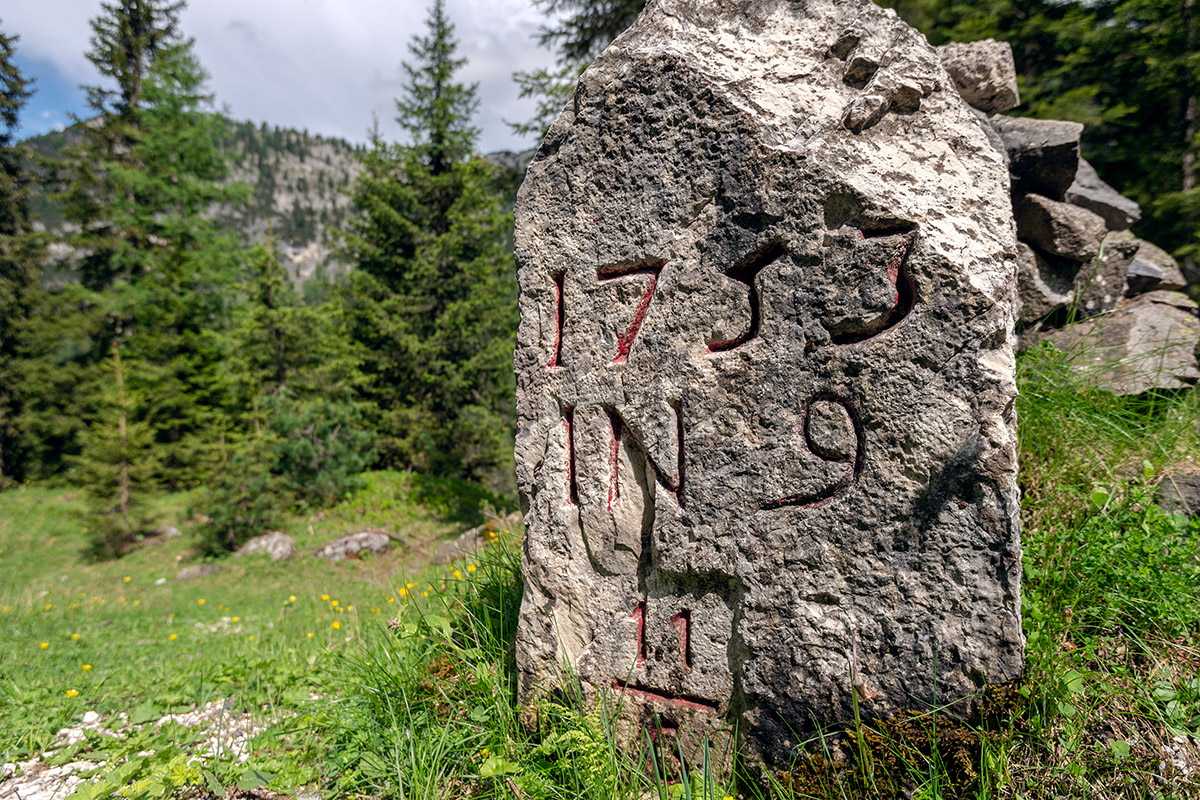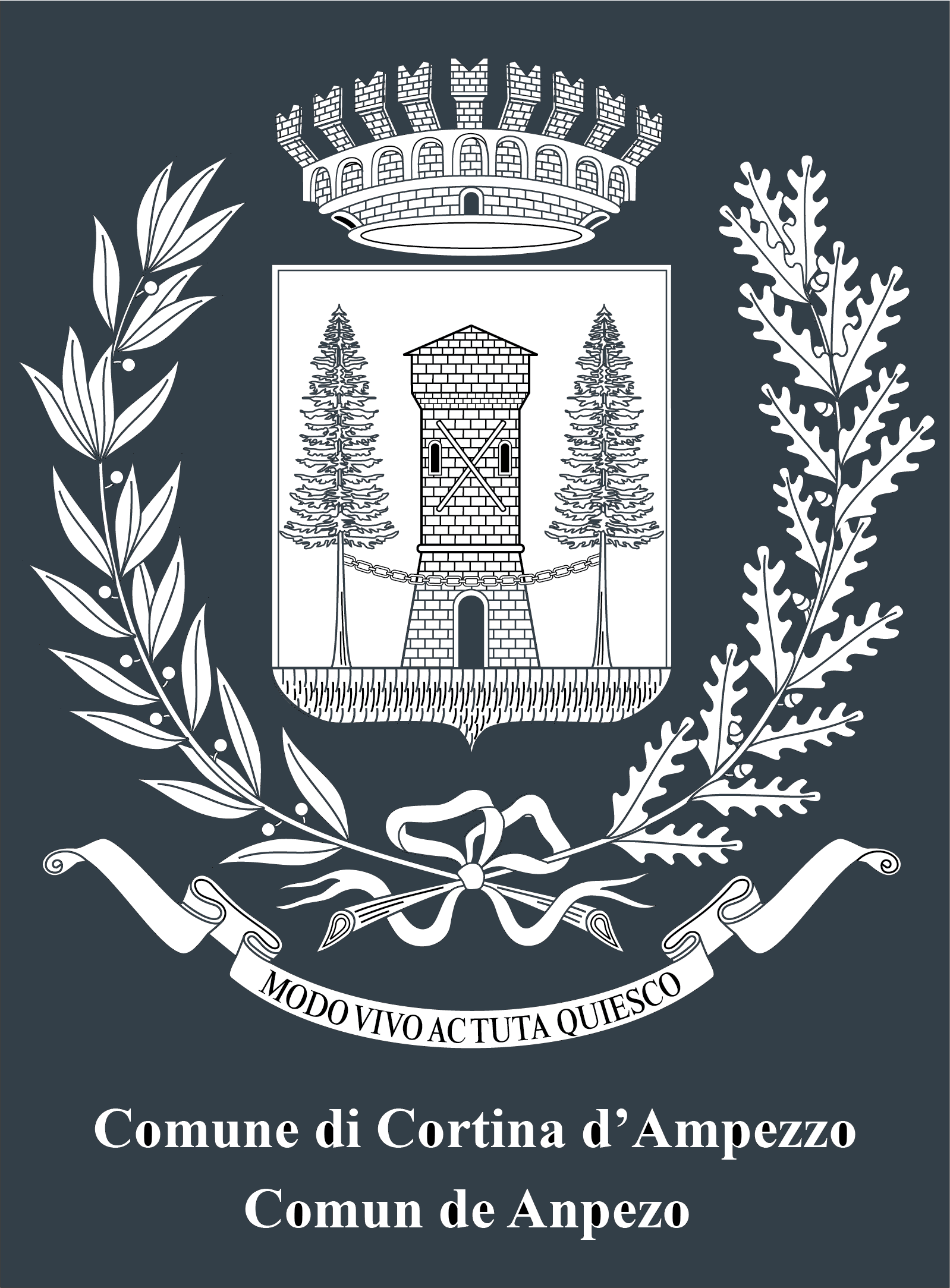
The story of the Muraglia Giau is an ancient one, which tells of the diatribes between San Vito and Ampezzo because of pastures and land. The first written document testifying to the contrasts between the two populations dates back to 1331.
But to understand the reason for these disputes, we must first understand the importance of the disputed area: the area of the Passo Giau, now served by a convenient paved road, is sheltered from the cold north winds, where streams and meadows abound, a true paradise for herds and shepherds, a place desired and coveted by residents of Ampezzo and San Vito. It seems that the first people to graze their cattle up there were the people of San Vito, who arrived via the Ambrizzola and Giau passes. In the document of 1331 a notary established that the Giau valley belonged to San Vito di Cadore, establishing some border points among other things. From 1511 with the passage of Cortina under Austria, the disputes took on international implications.
The disputes became more intense until 1752 when it was established that the residents of San Vito could continue to enjoy their ancient rights, provided they built at their own expense a marogna, a wall designed to prevent their livestock from encroaching on the Ampezzo meadows, which was to extend in length for approximately 2 km, 6 feet high, 5 feet wide at the base, 2 feet wide at the top, with the works to be completed within 90 days. The entire population committed fully to the undertaking and managed to complete the Muraglia di Giau within the established time frame, which was felt to be indispensable for future generations. The cost of the work was over 13,000 gold lire, equivalent to 6,800 cows at the time.
In summer or autumn, when the snow has not yet covered our beautiful mountains with its white mantle, visitors can go in search of the memorial stones and tombstones that mark this demarcation line, distinguished by crosses, lions of San Marco and Habsburg shields. These testimonies are still present at the base of the Torre Luisa, a small Dolomite pinnacle that rises on the eastern side of Ra Gusela, at the Becco della Muraglia di Giau, near the asphalt road and on the northern slopes of the Lastoni di Formin, above the lake of Ciou de ra Maza. In some places the tombstones have unfortunately been removed by unknown vandals, but in others the Austrian marble shield and the Leone di San Marco in Castellavazzo stone, still fixed with the original bars, continue to coexist, bringing us back to a troubled history, to an important and debated border.
Wandering on these radiant pastures and observing the testimonies left by our predecessors means recovering a not inconsiderable part of the life of our ancestors, a cross-section of economy and society in which the obstinate and meticulous precision of Cadore has been highlighted in the broader context of international politics, forcing even an empress and a doge to deign attention.

The story of the Muraglia Giau is an ancient one, which tells of the diatribes between San Vito and Ampezzo because of pastures and land. The first written document testifying to the contrasts between the two populations dates back to 1331.
But to understand the reason for these disputes, we must first understand the importance of the disputed area: the area of the Passo Giau, now served by a convenient paved road, is sheltered from the cold north winds, where streams and meadows abound, a true paradise for herds and shepherds, a place desired and coveted by residents of Ampezzo and San Vito. It seems that the first people to graze their cattle up there were the people of San Vito, who arrived via the Ambrizzola and Giau passes. In the document of 1331 a notary established that the Giau valley belonged to San Vito di Cadore, establishing some border points among other things. From 1511 with the passage of Cortina under Austria, the disputes took on international implications.
The disputes became more intense until 1752 when it was established that the residents of San Vito could continue to enjoy their ancient rights, provided they built at their own expense a marogna, a wall designed to prevent their livestock from encroaching on the Ampezzo meadows, which was to extend in length for approximately 2 km, 6 feet high, 5 feet wide at the base, 2 feet wide at the top, with the works to be completed within 90 days. The entire population committed fully to the undertaking and managed to complete the Muraglia di Giau within the established time frame, which was felt to be indispensable for future generations. The cost of the work was over 13,000 gold lire, equivalent to 6,800 cows at the time.
In summer or autumn, when the snow has not yet covered our beautiful mountains with its white mantle, visitors can go in search of the memorial stones and tombstones that mark this demarcation line, distinguished by crosses, lions of San Marco and Habsburg shields. These testimonies are still present at the base of the Torre Luisa, a small Dolomite pinnacle that rises on the eastern side of Ra Gusela, at the Becco della Muraglia di Giau, near the asphalt road and on the northern slopes of the Lastoni di Formin, above the lake of Ciou de ra Maza. In some places the tombstones have unfortunately been removed by unknown vandals, but in others the Austrian marble shield and the Leone di San Marco in Castellavazzo stone, still fixed with the original bars, continue to coexist, bringing us back to a troubled history, to an important and debated border.
Wandering on these radiant pastures and observing the testimonies left by our predecessors means recovering a not inconsiderable part of the life of our ancestors, a cross-section of economy and society in which the obstinate and meticulous precision of Cadore has been highlighted in the broader context of international politics, forcing even an empress and a doge to deign attention.

The story of the Muraglia Giau is an ancient one, which tells of the diatribes between San Vito and Ampezzo because of pastures and land. The first written document testifying to the contrasts between the two populations dates back to 1331.
But to understand the reason for these disputes, we must first understand the importance of the disputed area: the area of the Passo Giau, now served by a convenient paved road, is sheltered from the cold north winds, where streams and meadows abound, a true paradise for herds and shepherds, a place desired and coveted by residents of Ampezzo and San Vito. It seems that the first people to graze their cattle up there were the people of San Vito, who arrived via the Ambrizzola and Giau passes. In the document of 1331 a notary established that the Giau valley belonged to San Vito di Cadore, establishing some border points among other things. From 1511 with the passage of Cortina under Austria, the disputes took on international implications.
The disputes became more intense until 1752 when it was established that the residents of San Vito could continue to enjoy their ancient rights, provided they built at their own expense a marogna, a wall designed to prevent their livestock from encroaching on the Ampezzo meadows, which was to extend in length for approximately 2 km, 6 feet high, 5 feet wide at the base, 2 feet wide at the top, with the works to be completed within 90 days. The entire population committed fully to the undertaking and managed to complete the Muraglia di Giau within the established time frame, which was felt to be indispensable for future generations. The cost of the work was over 13,000 gold lire, equivalent to 6,800 cows at the time.
In summer or autumn, when the snow has not yet covered our beautiful mountains with its white mantle, visitors can go in search of the memorial stones and tombstones that mark this demarcation line, distinguished by crosses, lions of San Marco and Habsburg shields. These testimonies are still present at the base of the Torre Luisa, a small Dolomite pinnacle that rises on the eastern side of Ra Gusela, at the Becco della Muraglia di Giau, near the asphalt road and on the northern slopes of the Lastoni di Formin, above the lake of Ciou de ra Maza. In some places the tombstones have unfortunately been removed by unknown vandals, but in others the Austrian marble shield and the Leone di San Marco in Castellavazzo stone, still fixed with the original bars, continue to coexist, bringing us back to a troubled history, to an important and debated border.
Wandering on these radiant pastures and observing the testimonies left by our predecessors means recovering a not inconsiderable part of the life of our ancestors, a cross-section of economy and society in which the obstinate and meticulous precision of Cadore has been highlighted in the broader context of international politics, forcing even an empress and a doge to deign attention.

The story of the Muraglia Giau is an ancient one, which tells of the diatribes between San Vito and Ampezzo because of pastures and land. The first written document testifying to the contrasts between the two populations dates back to 1331.
But to understand the reason for these disputes, we must first understand the importance of the disputed area: the area of the Passo Giau, now served by a convenient paved road, is sheltered from the cold north winds, where streams and meadows abound, a true paradise for herds and shepherds, a place desired and coveted by residents of Ampezzo and San Vito. It seems that the first people to graze their cattle up there were the people of San Vito, who arrived via the Ambrizzola and Giau passes. In the document of 1331 a notary established that the Giau valley belonged to San Vito di Cadore, establishing some border points among other things. From 1511 with the passage of Cortina under Austria, the disputes took on international implications.
The disputes became more intense until 1752 when it was established that the residents of San Vito could continue to enjoy their ancient rights, provided they built at their own expense a marogna, a wall designed to prevent their livestock from encroaching on the Ampezzo meadows, which was to extend in length for approximately 2 km, 6 feet high, 5 feet wide at the base, 2 feet wide at the top, with the works to be completed within 90 days. The entire population committed fully to the undertaking and managed to complete the Muraglia di Giau within the established time frame, which was felt to be indispensable for future generations. The cost of the work was over 13,000 gold lire, equivalent to 6,800 cows at the time.
In summer or autumn, when the snow has not yet covered our beautiful mountains with its white mantle, visitors can go in search of the memorial stones and tombstones that mark this demarcation line, distinguished by crosses, lions of San Marco and Habsburg shields. These testimonies are still present at the base of the Torre Luisa, a small Dolomite pinnacle that rises on the eastern side of Ra Gusela, at the Becco della Muraglia di Giau, near the asphalt road and on the northern slopes of the Lastoni di Formin, above the lake of Ciou de ra Maza. In some places the tombstones have unfortunately been removed by unknown vandals, but in others the Austrian marble shield and the Leone di San Marco in Castellavazzo stone, still fixed with the original bars, continue to coexist, bringing us back to a troubled history, to an important and debated border.
Wandering on these radiant pastures and observing the testimonies left by our predecessors means recovering a not inconsiderable part of the life of our ancestors, a cross-section of economy and society in which the obstinate and meticulous precision of Cadore has been highlighted in the broader context of international politics, forcing even an empress and a doge to deign attention.

The story of the Muraglia Giau is an ancient one, which tells of the diatribes between San Vito and Ampezzo because of pastures and land. The first written document testifying to the contrasts between the two populations dates back to 1331.
But to understand the reason for these disputes, we must first understand the importance of the disputed area: the area of the Passo Giau, now served by a convenient paved road, is sheltered from the cold north winds, where streams and meadows abound, a true paradise for herds and shepherds, a place desired and coveted by residents of Ampezzo and San Vito. It seems that the first people to graze their cattle up there were the people of San Vito, who arrived via the Ambrizzola and Giau passes. In the document of 1331 a notary established that the Giau valley belonged to San Vito di Cadore, establishing some border points among other things. From 1511 with the passage of Cortina under Austria, the disputes took on international implications.
The disputes became more intense until 1752 when it was established that the residents of San Vito could continue to enjoy their ancient rights, provided they built at their own expense a marogna, a wall designed to prevent their livestock from encroaching on the Ampezzo meadows, which was to extend in length for approximately 2 km, 6 feet high, 5 feet wide at the base, 2 feet wide at the top, with the works to be completed within 90 days. The entire population committed fully to the undertaking and managed to complete the Muraglia di Giau within the established time frame, which was felt to be indispensable for future generations. The cost of the work was over 13,000 gold lire, equivalent to 6,800 cows at the time.
In summer or autumn, when the snow has not yet covered our beautiful mountains with its white mantle, visitors can go in search of the memorial stones and tombstones that mark this demarcation line, distinguished by crosses, lions of San Marco and Habsburg shields. These testimonies are still present at the base of the Torre Luisa, a small Dolomite pinnacle that rises on the eastern side of Ra Gusela, at the Becco della Muraglia di Giau, near the asphalt road and on the northern slopes of the Lastoni di Formin, above the lake of Ciou de ra Maza. In some places the tombstones have unfortunately been removed by unknown vandals, but in others the Austrian marble shield and the Leone di San Marco in Castellavazzo stone, still fixed with the original bars, continue to coexist, bringing us back to a troubled history, to an important and debated border.
Wandering on these radiant pastures and observing the testimonies left by our predecessors means recovering a not inconsiderable part of the life of our ancestors, a cross-section of economy and society in which the obstinate and meticulous precision of Cadore has been highlighted in the broader context of international politics, forcing even an empress and a doge to deign attention.





Head Office: Loc. Sacus 4, 32043 Cortina d’Ampezzo (BL) – P.I. 00806650255 | Privacy Policy – Cookie Policy
The Cortina Skyline is back!
Starting December 23, 2025, the lift system connecting Tofane, 5 Torri, and Falzarego will be back in operation.
A spectacular journey among the peaks, made possible by the synergy between Servizi Ampezzo S.r.l. and ISTA S.p.A.
Ready to touch the sky?